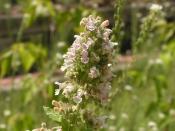Classification in biology, is the identification, naming, and groupingof organisms into a formal system. The vast numbers of living forms arenamed and arranged in an orderly manner so that biologists all over theworld can be sure they know the exact organism that is being examinedand discussed. Groups of organisms must be defined by the selection ofimportant characteristics, or shared traits, that make the members ofeach group similar to one another and unlike members of other groups.
Modern classification schemes also attempt to place groups intocategories that will reflect an understanding of the evolutionaryprocesses underlying the similarities and differences among organisms.
Such categories form a kind of pyramid, or hierarchy, in which thedifferent levels should represent the different degrees of evolutionaryrelationship. The hierarchy extends upward from several millionspecies, each made up of individual organisms that are closely related,to a few kingdoms, each containing large assemblage Carolus Linnaeus isprobably the single most dominant figure in systematic classification.
Born in 1707, he had a mind that was orderly to the extreme. Peoplesent him plants from all over the world, and he would devise a way torelate them. At the age of thirty-two he was the author of fourteenbotanical works. His two most famous were Genera Plantarum, developingan artificial sexual system, and Species Plantarum, a famous work wherehe named and classified every plant known to him, and for the firsttime gave each plant a binomial. This binomial system was a vastimprovement over some of the old descriptive names for plants usedformerly. Before Linnaeus, Catnip was known as: "Nepeta floribusinterrupte spicatis pedunculatis" which is a brief description of theplant. Linnaeus named it Nepeta cataria--cataria meaning, "pertainingto cats". The binomial nomenclature is not only more precise andstandardized; it also relates plants together, thus adding muchinterest and information in the name. For instance, Solanum relates thepotato, the...


